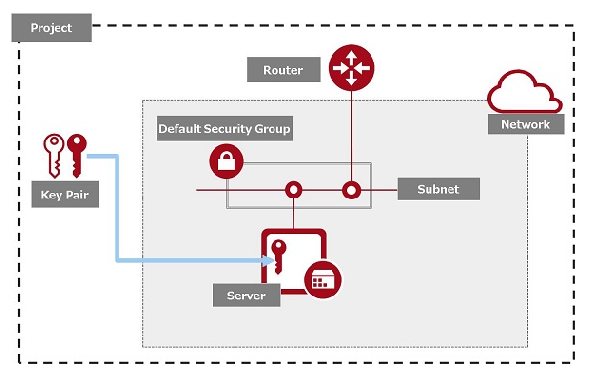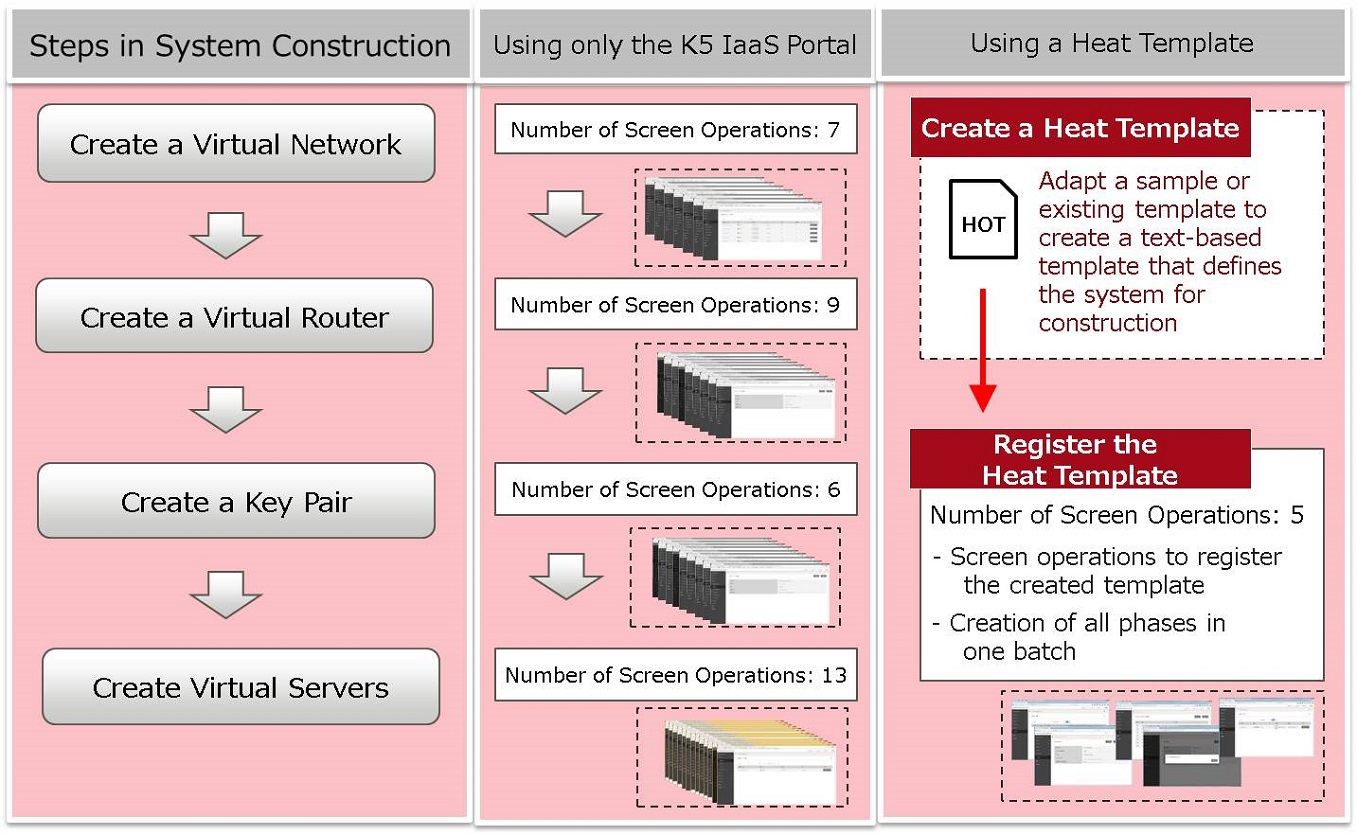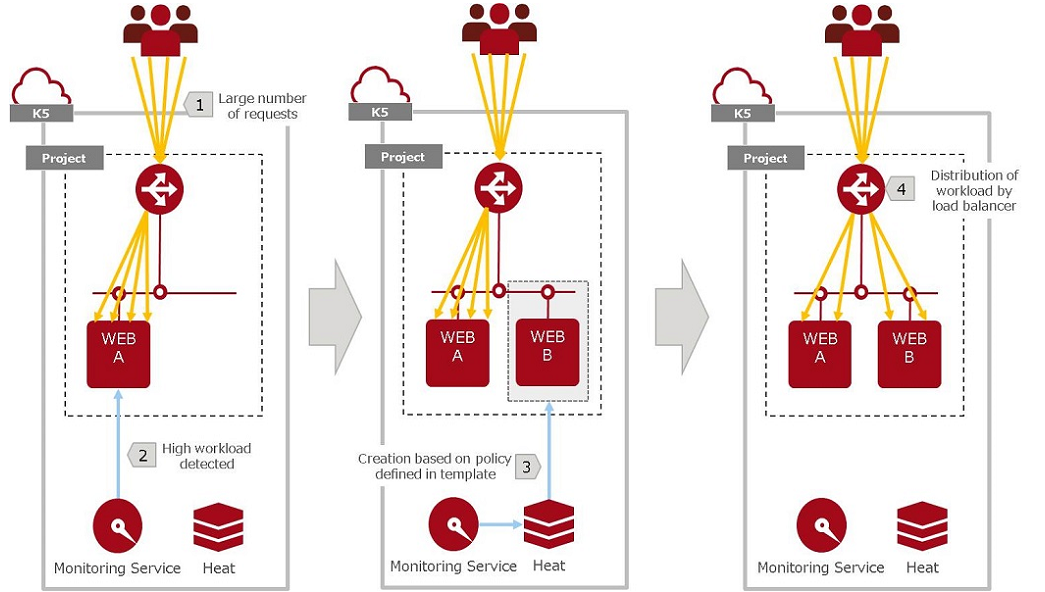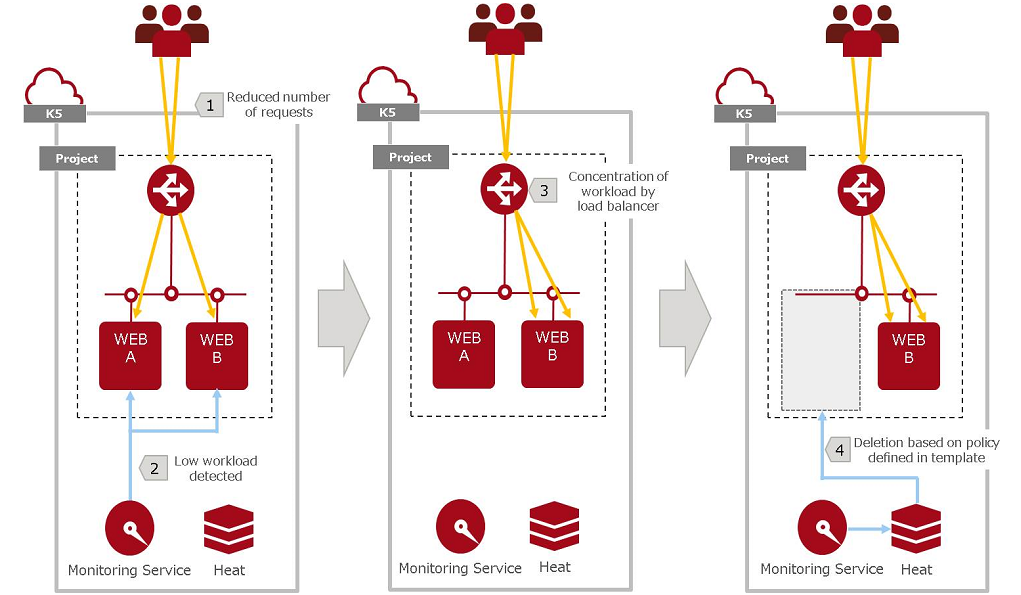Overview of Heat
Using the IaaS, it is possible to automatically create and manage systems that involve virtual resources such as "virtual servers", "virtual networks", and "virtual volumes", using the provided orchestration function. Heat places requests for operations with the coordination function based on various definition templates (text-based).
For details on the virtual resources that can be used with Heat, refer to "Supported resource types".
- Improved efficiency in system construction and management operations
- Configuration of auto scaling
The details of each of these merits are explained below.
Improved efficiency in system construction and management operations
Using Heat it is possible to perform batch creation of virtual resources. In addition, reusing created Heat template definitions makes it possible to easily replicate systems and perform modification or deletion. This enables efficient system construction and management on IaaS, and reduces the workload of users.
An example, comparing the results of when construction is performed manually using the IaaS service portal and when the same operation (based on the number of screen operations on the IaaS service portal) is performed using Heat is given on the following page.
This comparison is based on construction of a simple system involving a single virtual server and one network as shown in the following figure.
Figure: System Configuration for Workload Comparison

SecurityGroup uses the default security group that is selected automatically.
The following figure shows the comparison results for each step of system construction.
Figure: Comparison of System Construction work Based on the Number of Operations on the IaaS Service Portal Window

Configuration of auto scaling
Auto scaling is a function for dynamically increasing or decreasing the number of virtual servers in a system, based on the CPU workload and other events.
Auto scaling enables handling of sporadic increases in the requests for services.
In addition, as it is possible to automatically reduce the number of virtual servers when the number of requests drops, unnecessary expenses are not incurred.
This auto scaling can only be configured using Heat.
The figure below gives an image of the operation of auto scaling (scale out) based on high CPU workload of a virtual server for which load balancing is being performed.
Figure: Image of Auto Scaling Operations (Scale Out)

The figure below gives an image of the operation of auto scaling (scale in) when the workload of the CPU lowers.
Figure: Image of Auto Scaling Operations (Scale In)
